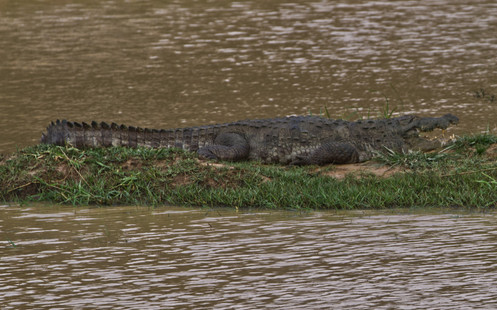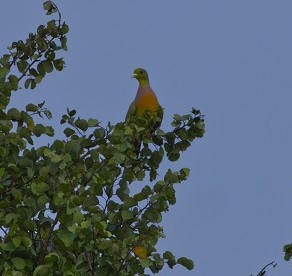Travel Wishes: Sri Lanka
- Mahmoud Akhal

- Oct 18, 2022
- 5 min read

Sri Lanka is a poor independent island country in the Indian ocean, Southwest of the bay of Bengal in South Asia. Its documented history goes back 3 000 years but evidence of prehistoric human settlements date back to at least 125 000 years ago and within the course of its history Sri Lanka has had as many names as of different civilizations ruling it.
Already during the antiquity, Sri Lanka was known by several names like Tambapanni, meaning "copper-red earth" given by the legendary Prince Vijaya, or Taprobana given by ancient Greeks. At the time, Sri Lanka was an independent country, though often fighting against the Indian empire and sometimes being occupied by it. This is when the term Lanka meaning "island" in Hindu started to appear to designate the country and translated into the Sinhala language spoken by most of the inhabitants.

Later Persians and Arabs who traded regularly with Sri Lanka referred to it as Sarandib, from which the English word "serendipity" is derived. When the Portuguese arrived in 1505 and colonized the coasts of the island, they named it Ceilão. In 1638, the Sri Lankan King signed a treaty with the Dutch to get rid of the Portuguese coastal colonies. The full independence of the island lasted more than a century, until in 1803 the British invaded it. They renamed the island, Ceylon, a derivative from the Portuguese name.
Sri Lanka finally achieve its independence in 1948 and became a republic in 1972. It chose the name Sri Lanka, that could be translated into "The Resplendent Island" or "The Fortunate Island".
Since the 3rd century, the island converted to Buddhism which represents the main religion with 70% of the population being Buddhists. The remaining 30% are shared between Hindus, Muslims and Christians. Most of the population speak Sinhala, except for the Tamil community mostly situated in the North and East sides of the country and who fought the government from 1985 to 2006.
Dambulla
Due to its position at the center of the island and in a major vegetable district, Dambulla plays a very important economic role in the country. This city is also to be visited for its important role in the Sri Lankan history and for its famous caved temples.
In the 1st century BC, King Valagamba got overthrown just five months after his coronation by a rebellion and an invasion from South India. During his 14 years of exile, he found refuge within meditating caves in the mountains of Dambulla that provided protection from his enemies.
When King Valagamba finally took back his throne and restored the Anuradhapura kingdom, he had this caves transformed into a suite of magnificent Buddhist temples in gratitude for the monks of Dambulla.
Pollonaruwa
The royal ancient city of Pollonaruwa is the second oldest of the Sri Lankan kingdom. It was first established as a military outpost before becoming the capital during the 10th century.
The name Pollonaruwa is of unknown origin and was first adopted by a British traveler. The name is perhaps derived from a sentence meaning "the city of Hindu sage Pulastya".
Spread across more than 3 000 square kilometers, Pollonaruwa is a well preserved site full of palaces, temples, ponds and even a hospital.
Sigiriya
Sigiriya, also called the Lion's Rock, is an ancient fortress located in the center of Sri Lanka and built by King Kashyapa around 477 AD as his new capital. At the time, the ancient city stood all around the rock, full of pools and gardens with the King's palace dominating 350 meters above it.
The gardens of Sigiriya are among the oldest landscaped gardens in the world. It is also considered to be one of the most important urban planning of the first millennium, with a very elaborate plan combining concepts of symmetry and asymmetry to intentionally interlock man-made geometry with natural forms.
The capital and the palace were abandoned a few years after the King's death but the site kept being used as a Buddhist monastery until the 14th century.
Kandy
If someone was to mention the English presence in the ancient Ceylon, we would most probably mention the city of Kandy. Located in the Central Province of the island, in the midst of the hills of the Kandy plateau, it is a major city of Sri Lanka. Before being the center of the English colony, Kandy was the last capital of the ancient kings' era.
Kandy is now famous for being the home of the Temple of the Tooth Relic (Sri Dalada Maligawa), one of the most sacred places of worship in the Buddhist world.
Nuwara Eliya
Nuwara Eliya is a city in the hills of the Central Province of Sri Lanka. Its name means "city on the plain" or "city of light". The city is the administrative capital of Nuwara Eliya District, with a picturesque landscape and a temperate climate.
For having an ideal altitude of more than 1 500 meters and for being the coolest climate of the island, it is considered to be the most important location for tea production in the country.
Ella
Surrounded by hills covered with cloud forests, rice and tea plantations, Ella is a small town in South of Sri Lanka. The town has a cooler climate than surrounding lowlands.
It is the perfect spot for hiking, either on one of the high hills around the city, such as Little Adam's Peak or one of the many waterfalls of the area.

It is also a nice little picturesque town to enjoy some quality time among Sri Lankan people or to visit the famous Nine Arches Bridge.

Udawalawe National Park
Udawalawe National Park is the biggest and the oldest natural park of Sri Lanka. Daily safaris are customary when going to Udawalawe and definitely a must-do when visiting the island.
It is particularly famous to be an elephant sanctuary though lots of birds, monkeys and reptiles can also be admired in the National Park.
The most famous bird in the park is probably the peacock, one of the symbols of Sri Lanka. Peacocks run freely throughout the island, not only in Udawalawe though they are especially numerous in the National Park.
Galle & Negombo
For being an island and a well-known commercial route, Sri Lanka have also seen the development of many towns and cities on its shores such as Colombo, its capital.
At a 120 kilometers South of Colombo stands Galle, a former major city of the colonial era. Galle is the best example of a fortified city built by the Portuguese in South and Southeast Asia, showing the interaction between Portuguese architectural styles and native traditions. The city was extensively fortified by the Dutch during the 17th century when it reached the height of its development.
Another remarkable town is probably Negombo, a former fishermen's town close to the capital that has now become a major seaside resort.
I hope you enjoyed your virtual trip to Sri Lanka!
See you soon for another exciting destination...

#SriLanka #Galle #Negombo #Udawalawe #NationalPark #Ella #NuwaraEliya #Kandy #Pollonaruwa #Dambulla #Beach #Tea #Colony #British #Portuguese #Dutch #Peacock #Elephant #ToothRelic #Buddhism #Temples #LionRock #Hindu #Asia #NineArchesBridge #Asia #Sea #Sigiriya #Island #Culture #mahmoudakhal











































































































































Merci pour ce voyage dans une ile que je ne connaissais pas. Les photos sont superbes et font rever ! On a tout, les paysages magnifiques (mention spéciale pour les champs de thé), le patrimoine historique, l'architecture, la faune sauvage... un régal pour les yeux ! Et je découvre que les Portugais ont colonisé un moment l'ile ;) Bref, encore un beau voyage😊 Merci !!
Nathalie
تحياتي لك يا محمود, شكرا على رسالة سرا لنكا. بعد ان تعافيت من زكام دام اسبوعا كاملا قرات واستمعت بالشرح بالأنكليزية بجمل مختصرة ولكن معبرة كثيرا. الصور لوحدها معبرة كثيرا. اهنأك من كل قلبي واتمنى لك النجاح الكامل.